This species has been observed on Reunion, Mayotte and Madagascar Islands
The mantle and body have an opaque white background colour with a uniformly coloured yellowish orange border The gills and relatively large rhinophores are translucent white with opaque white edging to the gills and rhinophore lamellae |

|
|
| Showing species characteristics... | Photo Philibert Bidgrain |
|
Remarks :
Identification confirmed by Nathalie Yonow
Synonymous : (according Worms)
- Chromodoris albonares, Rudman, 1990
Bibliographic data :
The name "albonares" from the Latin for "white" and "nose", is a reference to the white rhinophore, which fulfil the role of a nose in these animals
The marginal yellowish orange band appears to consist of orange lobules and the inside edge is very irregular
Orange spotting may also be present on the notum
The eight simple gills are arranged in a cup-shaped cluster around the anus. The gills are not vibratile.
The rhinophore stalk is transparent, and the club is translucent white with some white dusting and opaque white lamellae
On the underside of the mantle the inside edge of the orange band diffuses further on the mantle skirt than dorsally. The rest of the underside is opaque white
These species have similarity with Thorunna horologia and Goniobranchus verrieri but :
- In G. verrieri, the rhinophores clubs are translucent red with a white edging to the lamellae.
- In Thorunna horologia, the marginal line thickens midway down the body. And an additional purple/bluish margin line is present around the edge of the foot of T. horologia
References :
Bill Rudman Seaslug site : Sea Slug Forum : Chromodoris albonares
Nudipixel Chromodoris albonares
Publications :
Johnson R.F. & Gosliner T.M. (2012) Traditional taxonomic groupings mask evolutionary history: A molecular phylogeny and new classification of the chromodorid nudibranchs. PLoS ONE 7(4): e33479
Rudman, W.B. (1990) The Chromodorididae (Opisthobranchia: Mollusca) of the Indo-West Pacific: further species of Glossodoris , Thorunna and the Chromodoris aureomarginata colour group. Zoological Journal of the Linnean Society, 100(3) : 263-326.
Other photos of Goniobranchus albonares :
Philibert Bidgrain Reunion, Etang salé, on the rocky coast, less 1 m, 9 April 2006, size : 8-10 mm On the underside of the mantle the inside edge of the orange band diffuses further on the mantle skirt than dorsally. The rest of the underside is opaque white . |
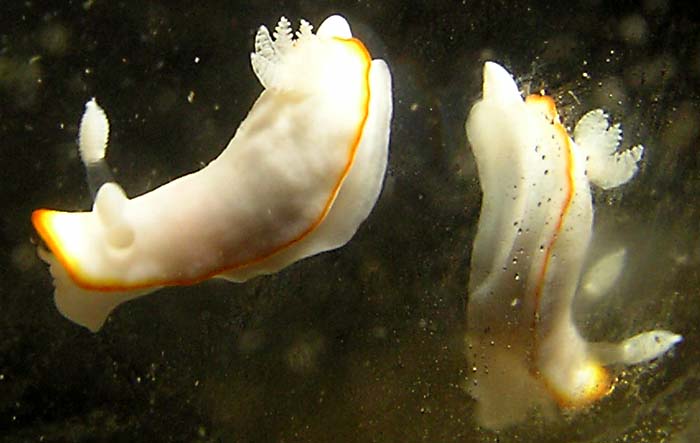 |
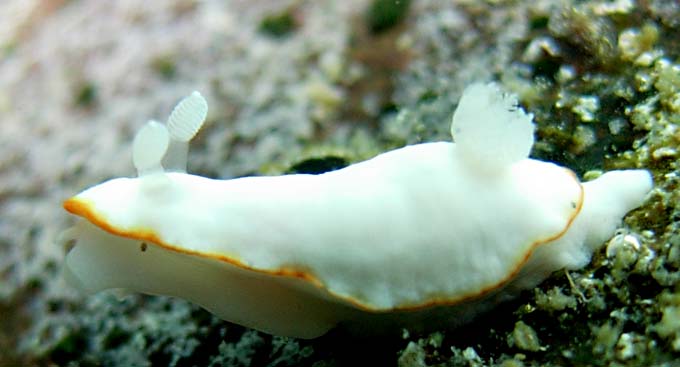 |
Philibert Bidgrain Reunion, Etang salé, on the rocky coast, less 1 m, 27 October 2005, size : 10-12 mm A specimen with a fine marginal band |
Sully Bachel Reunion, Route en corniche, La Possession, 4 m , 3 October 2009, size : 5-7 mm A juvenile with very large rhinophores... |
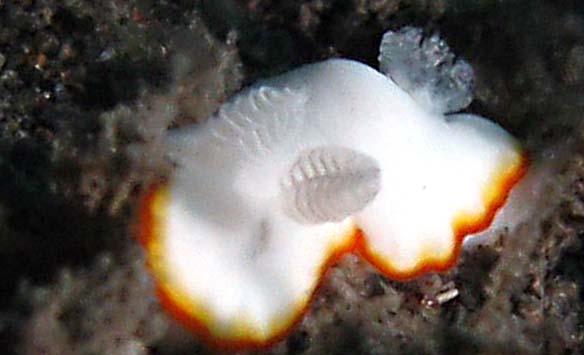 |
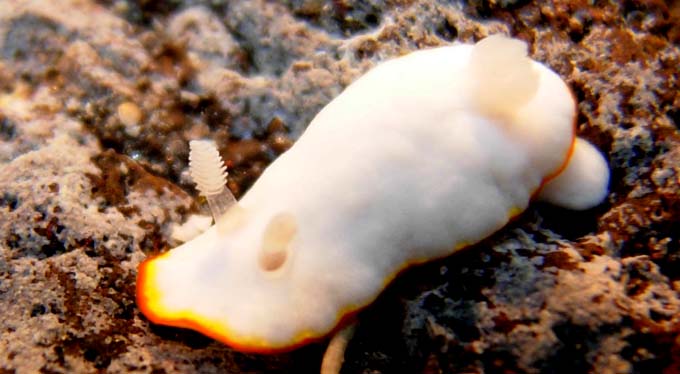 |
Christophe Cadet Reunion, Etang salé, on the rocky coast, less 1 m, 13 September 2009, size : 10 mm
|
Alain-Benoît rassat Madagascar, Nosy Bé, ledge, 15 m, 3 March 2016, size : 10 mm |
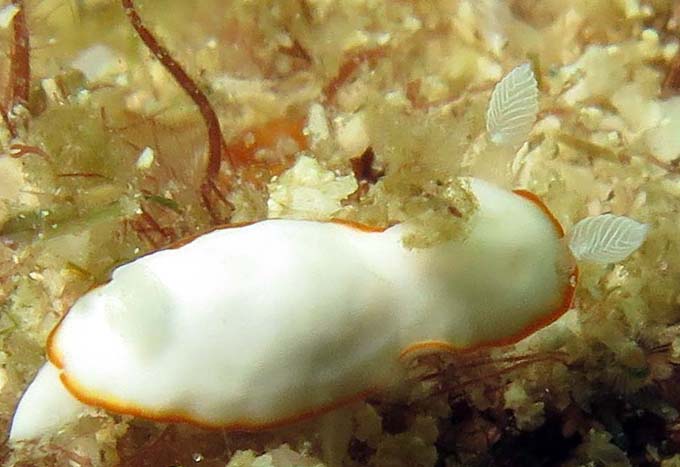 |
More photos from Indian Ocean
Reunion, Goniobranchus albonares, at Etang salé, by Philibert Bidgrain
Reunion, Goniobranchus albonares in the dark land, at Etang salé, by Philibert Bidgrain
Mayotte, Goniobranchus albonares, by Fabrice Schubert
Reunion, Goniobranchus albonares probably mating, at Etang salé, by Christophe Cadet